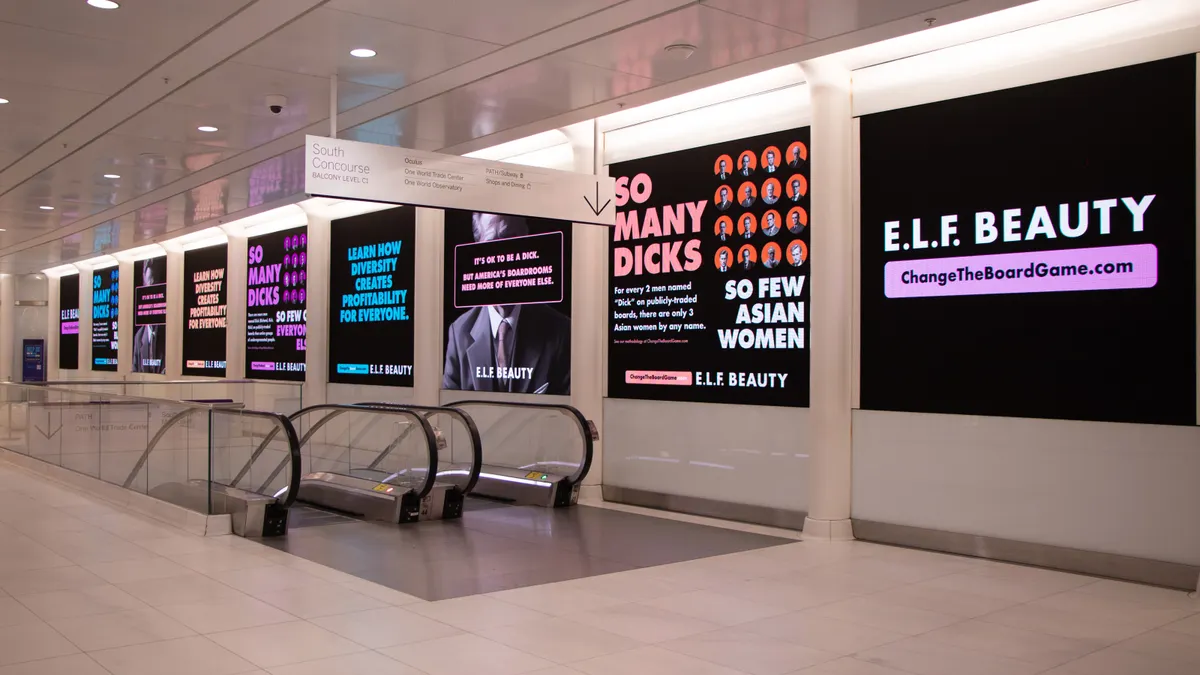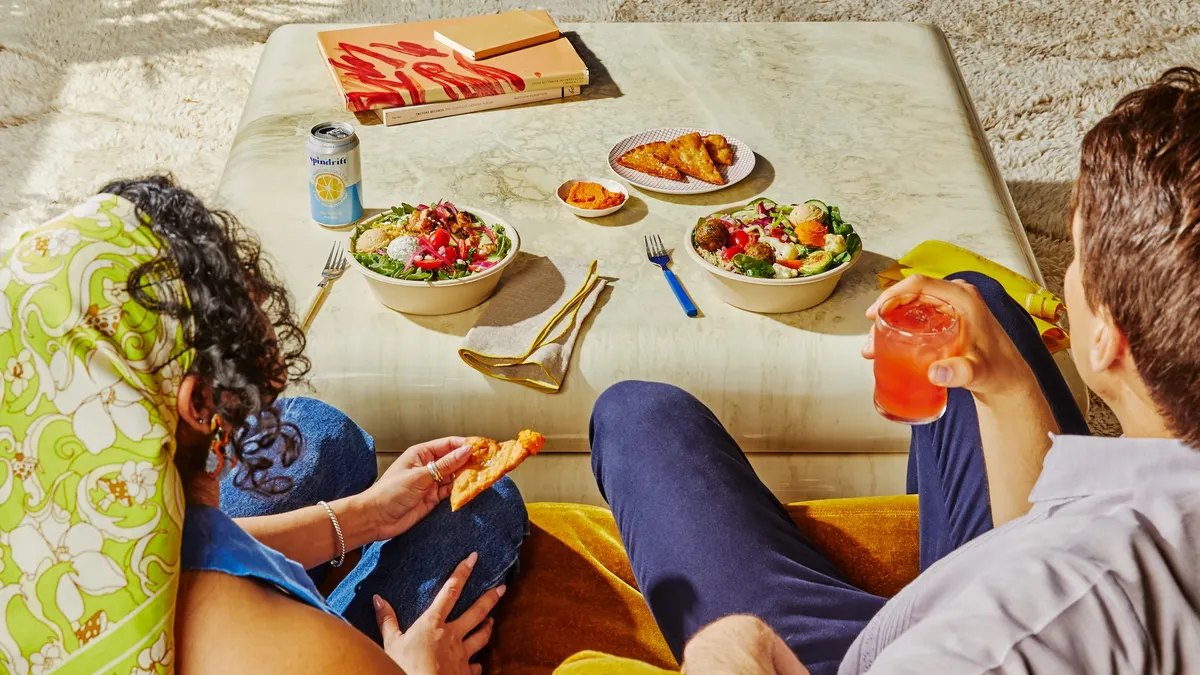NEW YORK — For marketers looking to stand out in a crowded, fast-moving media landscape, campaign launches can be a make-or-break deal. The industry's rapid-fire pace means brands today must not only put greater resources into understanding when and how to effectively deploy new campaigns, but also be able to quickly adjust their strategy based on consumer response, panelists said during a discussion at Advertising Week on Monday.
"You never have a second chance to make a first impression," Laura Beaudin, a partner at Bain & Company, said. "You will not have another chance to be able to create that success story."
During the discussion, Kellogg CMO of North America Gail Horwood detailed how the legacy packaged foods giant has realigned its internal and external teams to create a larger impact upfront and win more "share of stomach" in a competitive category. Kellogg's pivot was in part informed by a playbook devised by partners Bain & Company and Twitter — also present on the panel — which outlines five strategic pillars. Following those steps resulted in one of the most successful product debuts in company history, according to Horwood, and one that combined everything from social media marketing to retail sampling and experiential events.
Cheez-It Snap'd, a thinner, crispier version of the cracker, took off thanks to a bedrock of consumer insights baked into the design — namely around binge-watching habits on platforms like Netflix — and the involvement of marketing stakeholders across Kellogg's organization from the get-go. The approach allowed Kellogg to tweak ideas in real-time and capitalize on relevant cultural conversations to its audience and product, including a viral meme inspired by "Avengers: Endgame" and an underground bunker hoarding precious cheese supplies.
"You can't [overestimate] the organizational inertia ... we've fundamentally changed the way we work at Kellogg to bring that together as one team," Horwood said. "When I talk about going big on the [campaign] reveal, it's not simply the media team or brand marketing — it's the entire end-to-end commercial team, right down to retail."
First impressions count
High-impact, cross-channel launch strategies are becoming a larger priority for categories beyond fast-movers like packaged foods. On the panel, Bain & Company shared new research conducted with Twitter that revealed campaign launches have increased 27% in the past two years.
The survey of 650 senior marketing executives in the U.S. emphasized how perceptions of campaign launches are shifting as well, with 80% of respondents believing winning the launch phase is critical to their overall campaign success. Additionally, 46% of the average marketer's working media budgets now go toward launches, which are forecast to command $60 billion in 2019.
"While there are more launches than ever, the window for getting it right is getting shorter," Beaudin said, adding that the timeframe can be as tight as two days.
To help marketers navigate this crunch, Beaudin detailed what Bain & Company and Twitter found were the five most effective guiding principles for marketers: heavy premarket research, owning a brand voice, focusing on influence over reach, spending big dollars on the actual launch event and ensuring the campaign can pivot based on real-time, data-driven feedback.
Though each aspect plays a role in developing a gameplan, panelists emphasized that the first pillar is the most significant in informing other decisions.
"The more pre-work, the better," Horwood said.
"It's not just your media agency, it's your media creative, your in-house team, your marketers and your retail team — everybody getting together on a weekly basis and optimizing," she added.
Tapping into culture
Putting more investment into the planning period can inform the purpose behind new products, according to panelists. The idea for Cheez-It Snap'd derived from Twitter data and Kellogg's internal analytics around binge-watching habits on platforms like Netflix, with the cracker tailored for extended periods of comfort viewing.
"We looked at this audience who's obsessed with movies and TV and [who were] constantly watching," Horwood said. "[We] designed the content and all of our communication to really speak uniquely to that audience."
Having a more fleshed-out vision of a target audience from the start laddered down into Kellogg's creative choices for promoting Cheez-It Snap'd. The rollout of the snack lined up the release of "Avengers: Endgame," a Marvel Studios franchise installment well-suited to Kellogg's pop culture enthusiast set, and also one tied to a viral meme — the Thanos "snap" — that gelled well with the voice of Cheez-It Snap'd.
If we could snap our fingers and you’d all cheese to exist. #Snapd pic.twitter.com/GouBO9h5ln
— CHEEZ-IT (@cheezit) April 25, 2019
"[The 'Avengers' meme] fit perfectly into our kind of content story, so we took advantage of that," Horwood said.
Going underground
Kellogg continued to generate consumer interest in Cheez-It Snap'd by layering the campaign messaging into retail activations and elsewhere. The marketer coordinated with in-house retail marketers and partners like Sam's Club, Walgreens and Amazon Treasure Truck on sampling that brought the snack home to consumers.
"Right out of the gate, we saw tremendous success with it through this integrated retail approach," Horwood said.
As Cheez-It Snap'd picked up traction, Kellogg searched for fans to amplify their voices on social media. That tactic followed Bain & Company insights that showed launch leaders are 1.8 times more likely to identify specific audience segments who can act as storytellers.
Kellogg marketers also began drawing up new creative concepts, including running with messaging that suggested the snack was so popular, Cheez-It would soon run out of cheese. In May, the brand extended the effort into the experiential space, doling out clues for a scavenger hunt that led to a hidden bunker stocked with Cheez-It Snap'd products.
"Interestingly enough, it became so popular, we were genuinely concerned that we may run out of cheese," Horwood said.
Cheez-It spinning the threat of a supply shortage into positive PR in some ways acted as a precursor to another viral marketing effort from this year, where Popeye's was able to create massive buzz around a new fried chicken sandwich. The fast food chain leveraged organic conversations from online communities like #BlackTwitter to generate $65 million in earned media, and played up the menu item's popularity by inviting by customers to BYOB, or "bring your own bun," to restaurant locations as supplies ran out.
Kellogg, for its part, took its own shortage opportunity to apply another one of the panel's core principles:
Higher investments in marketing and product development are a broader theme for Kellogg's these days, which saw net sales in North America grew more in Q2 this year than they have since the first quarter of 2013, according to financial analysts. However, the Snap'd campaign reflects the potential payoff from channeling resources into connecting with dedicated fans as opposed to angling harder for mass audiences.
"We pivoted to a much more targeted, much smaller audience, which may seem counterintuitive," Horwood said. "But if you think about the principles of influence versus reach, it really ended up panning out for us."




















